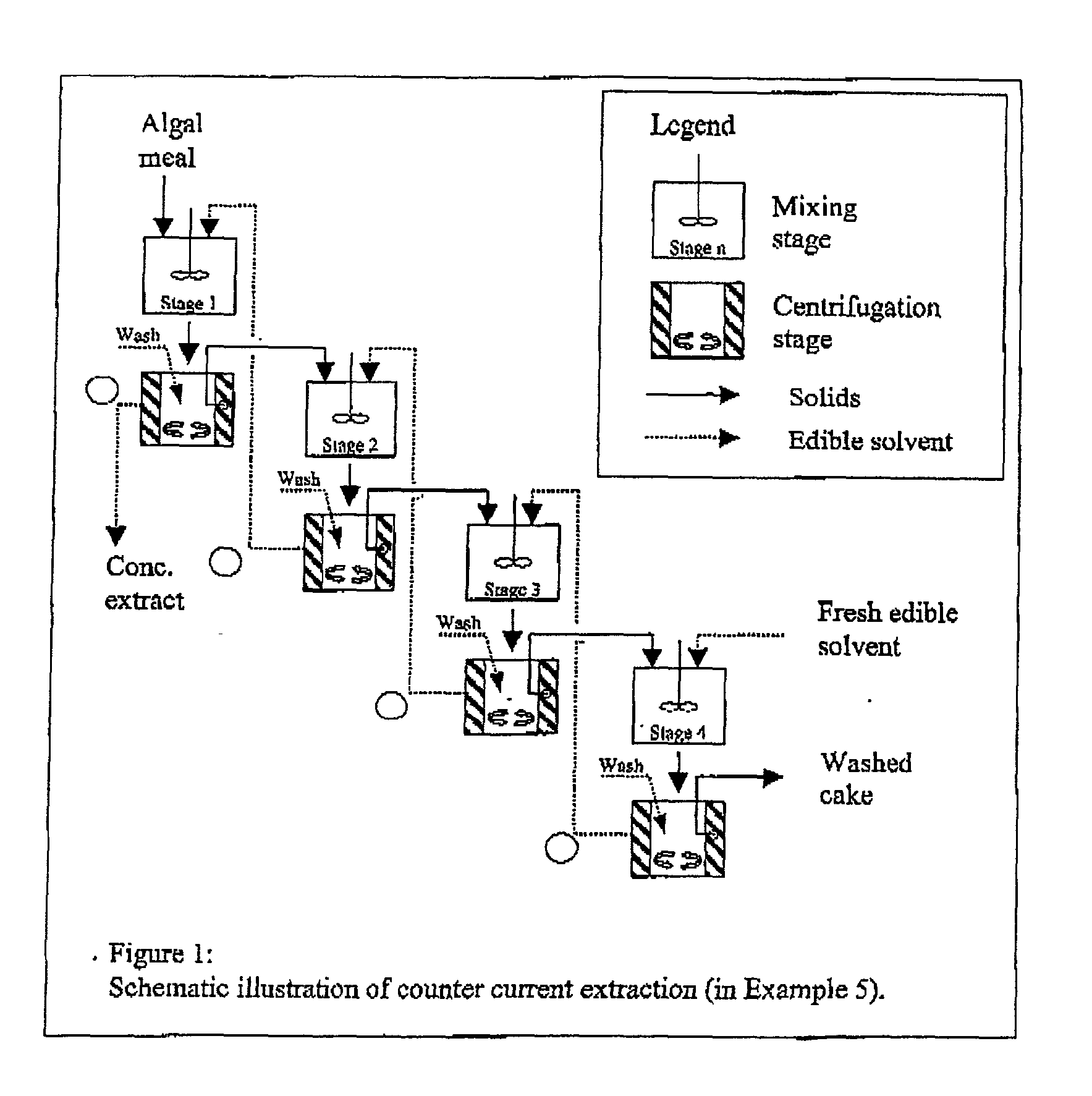Edible solvent extraction of carotenoids from microorganisms
a technology of carotenoids and solvents, applied in the field of edible solvent extraction of carotenoids from microorganisms, can solve the problems of reducing the efficiency of carotenoid-enriched separation, prolonging the separation process, and unable to remove fine cell debris by traditional pressure filtration. achieve the effect of optimum flow rate, efficient extraction, and improved separation efficiency
- Summary
- Abstract
- Description
- Claims
- Application Information
AI Technical Summary
Benefits of technology
Problems solved by technology
Method used
Image
Examples
examples
[0030] 1. Cell-ruptured, dehydrated, and ground green alga (Haematococcus pluvialis) was admixed with about 50 percent by weight of an edible solvent (rice bran oil) and centrifuged in a counter-current extraction process involving the initial extraction followed by up to six (6) cake washing stages for each set of extractions, each using a Mettich centrifuge equipped with a perforated bowl. The perforated bowl was lined with a high thread-count linen cloth bag to aid in the retention of the cake formed by the residual solids. Diatomaceous earth was added to the mixture as a filtration aid at a rate of five percent of the total weight of the ground algal meal and rice bran oil. Extracts from the second through last stages were returned to the process for use in washing the next cake, thus increasing the carotenoid concentration of each subsequent oil extract. Table 1 shows the astaxanthin concentrations of the collected extracts and residual solids from three cakes using a counter-c...
PUM
| Property | Measurement | Unit |
|---|---|---|
| pressures | aaaaa | aaaaa |
| pressures | aaaaa | aaaaa |
| temperatures | aaaaa | aaaaa |
Abstract
Description
Claims
Application Information
 Login to View More
Login to View More - R&D
- Intellectual Property
- Life Sciences
- Materials
- Tech Scout
- Unparalleled Data Quality
- Higher Quality Content
- 60% Fewer Hallucinations
Browse by: Latest US Patents, China's latest patents, Technical Efficacy Thesaurus, Application Domain, Technology Topic, Popular Technical Reports.
© 2025 PatSnap. All rights reserved.Legal|Privacy policy|Modern Slavery Act Transparency Statement|Sitemap|About US| Contact US: help@patsnap.com

